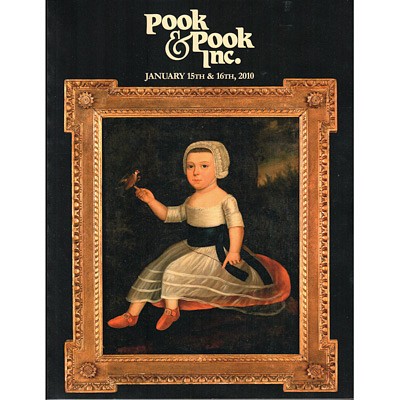Philadelphia William & Mary oak tall case clock, c
Lot 791
About Seller
Pook & Pook Inc
463 East Lancaster Avenue
Downingtown, PA 19335
United States
Pook & Pook Inc. auction house was founded by Ronald and Debra Pook in 1984 out of the Pook’s thriving antique business, which they began a decade earlier. Located in Chester County, Pennsylvania, Pook & Pook, Inc.’s offices are approximately thirty-five minutes west of Philadelphia, in an old stone...Read more
Categories
Estimate:
$8,000 - $12,000
Sold for
$30,000
Absentee vs Live bid
Two ways to bid:
- Leave a max absentee bid and the platform will bid on your behalf up to your maximum bid during the live auction.
- Bid live during the auction and your bids will be submitted real-time to the auctioneer.
Bid Increments
| Price | Bid Increment |
|---|---|
| $0 | $25 |
| $500 | $50 |
| $1,000 | $100 |
| $2,000 | $200 |
| $5,000 | $500 |
| $10,000 | $1,000 |
| $20,000 | $2,000 |
| $50,000 | $5,000 |
| $100,000 | $10,000 |
| $200,000 | $20,000 |
| $500,000 | $50,000 |
About Auction
By Pook & Pook Inc
Jan 15, 2010
Set Reminder
2010-01-15 09:00:00
2010-01-15 09:00:00
America/New_York
Bidsquare
Bidsquare : Period Furniture & Accessories
https://www.bidsquare.com/auctions/pook/period-furniture-accessories-13180
Period Furniture & Accessories Pook & Pook Inc conditions@pookandpook.com
Period Furniture & Accessories Pook & Pook Inc conditions@pookandpook.com
- Lot Description
Philadelphia William & Mary oak tall case clock, ca. 1705, the flat top bonnet enclosing an 8-day works with brass face, signed Abel Cottey Philadelphia, the works are inscribed behind the face BC 1709 m 9x20 clock BC, probably stands for Cottey's apprentice Benjamin Chandlee, above a straight case with bracket feet, 80 1/2" h. This is the earliest known date on an American clock. The only other surviving example of Cottey's work is a clock face in the collection of Philip Bradley, Illustrated Worldly Goods, fig. 420. Illustrated in Palmer The Book of American Clocks, fig. 3, described as Possibly the earliest extant American made clock. Provenance: Carson family.Pendulum (broken), winder, 2 weights, no door key. Philadelphia William & Mary oak tall case clock, ca. 1705, the flat top bonnet enclosing an 8-day works with brass face, signed Abel Cottey Philadelphia, the works are inscribed behind the face BC 1709 m 9x20 clock BC, probably stands for Cottey's apprentice Benjamin Chandlee, above a straight case with bracket feet, 80 1/2'' h. This is the earliest known date on an American clock. The only other surviving example of Cottey's work is a clock face in the collection of Philip Bradley, Illustrated Worldly Goods, fig. 420. Illustrated in Palmer The Book of American Clocks, fig. 3, described as Possibly the earliest extant American made clock. Provenance: Carson family. Pine cornice may be a very early replacement. Works do not fill window and may be by association, however the extremely early date of both the works and case make this unlikely. Feet replaced. Pook & Pook, Inc. does not guarantee clocks to be complete or in working condition.
Condition
- Buyer's Premium



 EUR
EUR CAD
CAD AUD
AUD GBP
GBP MXN
MXN HKD
HKD CNY
CNY MYR
MYR SEK
SEK SGD
SGD CHF
CHF THB
THB











